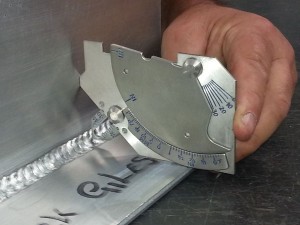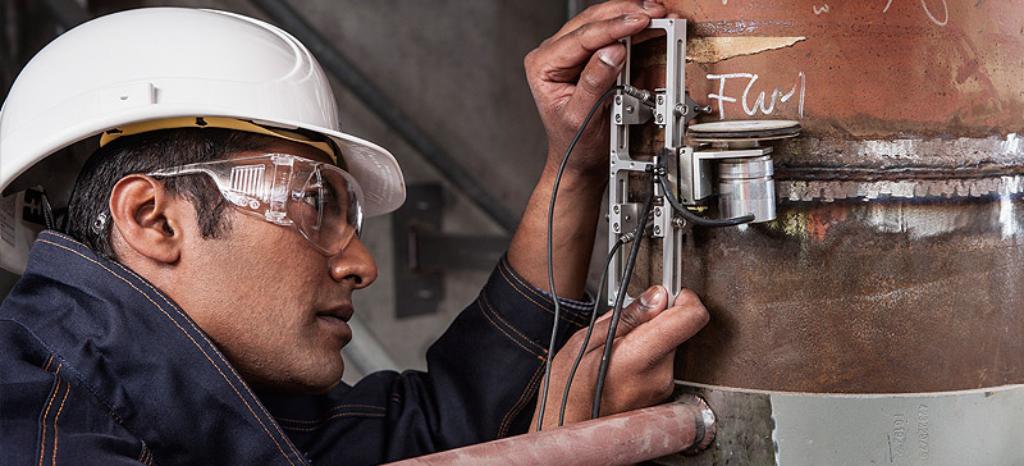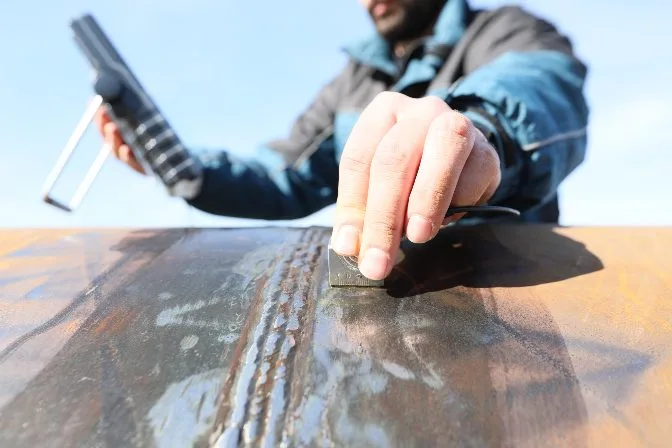The Ultimate Checklist for Welding Inspection Gilbert Arizona: Ensuring Safety and Precision
The Ultimate Checklist for Welding Inspection Gilbert Arizona: Ensuring Safety and Precision
Blog Article
A Comprehensive Guide to Welding Examination: Comprehending Standards, Techniques, and Finest Practices for Quality Guarantee

Welding examination plays an essential role in making sure the structural stability and safety of welded components, demanding a complete understanding of industry requirements such as those developed by AWS and ASME. Various assessment strategies, including aesthetic and ultrasonic screening, are used to detect potential issues that could compromise high quality. Moreover, executing ideal practices can substantially enhance operational dependability and foster trust fund amongst clients. As we explore these important elements, it becomes obvious that the effects of welding evaluation expand far beyond compliance, welcoming a better exam of how these procedures shape market criteria and techniques.
Significance of Welding Inspection
Welding inspection plays an essential role in ensuring the integrity and safety and security of welded frameworks. It is a vital process that validates that welds adapt predefined specifications, which is vital in various markets, including construction, automobile, and aerospace. By carrying out complete assessments, potential issues such as cracks, insufficient combination, and porosity can be recognized early, protecting against disastrous failures that can cause accidents or costly repairs.
The relevance of welding examination expands past plain compliance with policies; it also promotes count on with stakeholders. Customers and regulative bodies expect assurance that the structures they rely upon are constructed to hold up against functional stress and anxieties. Moreover, reliable welding evaluation practices add to long-lasting durability and performance of the frameworks, eventually leading to minimized maintenance expenses.
Additionally, welding inspection promotes a society of top quality within companies, urging adherence to ideal techniques and continual enhancement. By integrating assessment processes into the welding workflow, companies can enhance their track record and establish themselves as leaders in high quality assurance. In conclusion, the significance of welding inspection lies in its ability to protect lives, guarantee structural reliability, and maintain sector standards, making it a vital facet of welding procedures.
Trick Sector Requirements
Guaranteeing compliance with key industry standards is important for preserving the high quality and safety of welded structures. Numerous organizations develop these requirements to advertise finest practices in welding and assessment. Among one of the most acknowledged are the American Welding Society (AWS) and the American Culture of Mechanical Designers (ASME), which supply comprehensive guidelines and requirements for welding procedures and inspection standards.
AWS requirements, such as AWS D1.1 for architectural welding, rundown demands for materials, layout, and screening to guarantee the integrity of welds. ASME codes, consisting of ASME Area IX, regulate the certification of welders and welding procedures, ensuring consistent quality in industrial applications. Globally, the ISO 3834 conventional highlights quality needs for combination welding, providing a structure for companies to show compliance with international finest methods.
Compliance with these criteria not only enhances the reliability of bonded frameworks but likewise mitigates dangers related to structural failures. Adherence to industry criteria is typically a prerequisite for regulatory approvals and can substantially affect task specifications. Ultimately, understanding and executing these crucial requirements are important for efficient welding assessment and quality control.
Inspection Techniques Introduction
Reliable welding assessment relies upon a selection of strategies developed to evaluate the quality and stability of welds. These strategies can be extensively classified into non-destructive and damaging testing (NDT) methods. Non-destructive screening techniques, which are commonly favored in the useful link industry, enable the assessment of welds without jeopardizing the honesty of the material.
Amongst the most frequently used NDT techniques are visual evaluation, ultrasonic testing, radiographic screening, and magnetic particle testing. Aesthetic assessment is often the initial step in the evaluation procedure, making it possible for examiners to recognize surface area flaws and evaluate weld grain accounts. Ultrasonic screening uses high-frequency acoustic waves to detect inner defects and determine the thickness of welds. Radiographic screening involves using X-ray or gamma-ray imaging to expose interior flaws, while magnetic particle testing is efficient for finding surface and near-surface interruptions in ferromagnetic materials.
Each technique has its own benefits and restrictions, making it vital for assessors to select the most suitable approach based click this site upon the certain demands of the project, the products entailed, and the urgency of the welds being inspected. This cautious selection ensures comprehensive evaluations and promotes safety and quality standards in welding procedures.

Usual Defects and Their Implications
A comprehensive understanding of usual flaws in welds is vital for keeping structural honesty and security in bonded buildings. Welding problems can substantially compromise the mechanical properties of the joint, leading to failures that might endanger both employees and tools.
Typical problems consist of porosity, which materializes as small gas pockets caught in the weld metal, damaging the total structure. Splitting is an additional common issue, typically resulting from rapid cooling or incorrect joint style, bring about stress and anxiety concentrations that can lead to tragic failures. Incomplete blend occurs when the weld metal falls short to correctly bond with the base product, producing powerlessness that might cause separation under load.
Various other remarkable flaws consist of damaging, where the weld grain deteriorates the base metal, and slag inclusions, which can hinder the weld's strength. Each of these defects has details ramifications; for circumstances, porosity can minimize ductility, while breaking straight influences tensile strength. Identifying and recognizing these flaws throughout evaluation is necessary for ensuring and carrying out corrective measures conformity with sector standards, eventually safeguarding the structural integrity of bonded settings up.
Best Practices for High Quality Assurance
Carrying out best methods for top quality assurance in welding procedures is vital for achieving ideal outcomes and decreasing flaws. One critical method is the facility of clear welding treatments that adhere to market standards and specs. These treatments need to include comprehensive guidelines regarding material option, joint preparation, and welding techniques to make sure uniformity and top quality.
Regular training and certification of welding personnel are likewise crucial. Experienced welders who comprehend the value of quality control are more probable to generate audio welds. Additionally, implementing a robust evaluation program, including both visual and non-destructive testing (NDT), can help identify defects early at the same time, permitting timely corrective activities.
Documents plays a vital duty in top quality assurance. Keeping exact documents of welding specifications, assessments, and click now repair services ensures traceability and liability. Moreover, utilizing advanced innovations such as automated welding devices can enhance accuracy and minimize the potential for human mistake - Welding Inspection Gilbert Arizona.
Finally, promoting a culture of high quality within the organization motivates staff members to prioritize high quality in their work. By adhering to these ideal practices, companies can boost the integrity of their welding procedures, inevitably resulting in boosted product high quality and reduced expenses connected with rework and repair work.

Conclusion
In verdict, welding assessment plays an important role in making sure the stability and safety of bonded structures. By implementing best techniques, organizations can enhance integrity, decrease maintenance costs, and grow count on among customers, eventually adding to effective welding operations.
Furthermore, welding inspection promotes a culture of top quality within companies, motivating adherence to ideal techniques and continual renovation. In verdict, the relevance of welding inspection lies in its ability to secure lives, guarantee structural integrity, and maintain market standards, making it an essential element of welding procedures.
Among the most recognized are the American Welding Society (AWS) and the American Culture of Mechanical Designers (ASME), which give detailed guidelines and specs for welding procedures and examination criteria.
Eventually, understanding and carrying out these essential requirements are necessary for reliable welding inspection and quality assurance.
Effective welding inspection relies on a variety of techniques designed to assess the quality and honesty of welds. - Welding Inspection Gilbert Arizona
Report this page